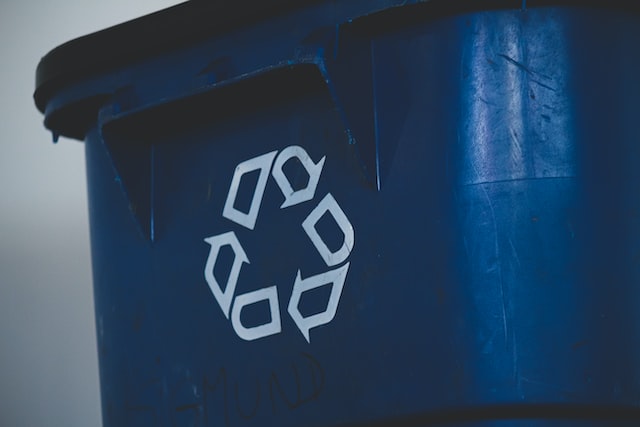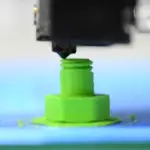You might be wondering what to do with all of that old solar equipment now that you’ve upgraded to a newer, more efficient system. Well, don’t worry; there are many ways you can recycle your old solar equipment safely and securely. We’ll show you how!
There are many benefits to recycling your old solar equipment, such as reducing environmental waste and helping others who might not be able to afford a brand-new system. However, it’s essential to ensure that you recycle your equipment safely so that it doesn’t end up in the wrong hands or cause any harm. Here are a few tips on how to recycle your old solar equipment safely and securely:
Find a Reputable Recycling Center
If you’re looking to recycle your old solar equipment, many reputable recycling centers can help you. However, it’s essential to research a center near you that has experience recycling this type of equipment. Here are some tips on how to find a reputable recycling center for your solar equipment.
- Search for “solar equipment recycling centers” or “solar panel recycling.” This will give you a good starting point for finding a center near you.
- Once you’ve found a few options, call them and ask about their experience recycling solar equipment. They should be able to provide you with some information about the process and what they do with the materials they recycle.
- Ask if they have specific requirements for the solar equipment you bring in. For example, some centers might only accept certain panels or batteries.
- Finally, ask about the fees associated with recycling your solar equipment. Some centers might charge by the pound, while others might have a flat fee.
Disable All Data Storage Devices
Another essential step you need to take if you’re planning on recycling or even to sell old solar panels is disabling all data storage devices. This includes anything from SD cards to hard drives. Doing this will help protect your personal information from being accessed by anyone who might come across the equipment later on.
Here’s a quick guide on properly disabling all data storage devices before recycling your solar equipment.
The first thing you need to do is find all of the data storage devices on your solar equipment. This can include SD cards, USB drives, and hard drives. Once you’ve located all the data storage devices, you’ll need to disable them so they can’t be used again. There are a few different ways you can do this, depending on the type of device:
SD Cards and USB Drives
When you no longer need an SD card or USB drive, it’s vital to properly disable it before disposing of it. This ensures that anyone else cannot access sensitive data on the device. The best way to disable an SD card or USB drive is to destroy it physically. This can be done by breaking the card or drive in half or using a hammer to shatter it into small pieces.
Why Should You Physically Destroy Your SD Card or USB Drive?
When you delete data from an SD card or USB drive, the data is not erased. Instead, it is marked as deleted, which means it can still be recovered using special software. To prevent this from happening, you need to destroy the device physically.
Destroying an SD card or USB drive may seem overkill, but it’s the best way to ensure that your data is truly gone and cannot be recovered. If you have sensitive data on your SD card or USB drive, you must ensure that it is properly destroyed before being disposed of.
How to Physically Destroy an SD Card or USB Drive?
You can physically destroy an SD card or USB drive in several ways. The easiest way is to break or drive the card in half with your hands. Another option is to use a hammer to shatter the card or drive it into small pieces.
If you have many SD cards or USB drives that need to be destroyed, you may want to consider investing in a commercial shredder. Shredders are designed specifically for destroying electronic devices, and they can quickly and easily destroy large numbers of SD cards or USB drives at once.
Hard Drives
Hard drives are a bit more complicated, as simply destroying them won’t disable them.
Securely Erasing Your Hard Drive
The first step is to download and install a hard drive eraser program. There are many free options available online, such as DBAN or HDDErase. Once you have downloaded and installed the program, simply follow the on-screen instructions to wipe the hard drive clean. This process will overwrite the entire hard drive with random data, making it impossible to recover any original data.
Physical Destruction
Another option is to destroy the hard drive physically. This can be done with a hammer, drill, or even a pair of pliers. Just make sure you destroy the hard drive so it cannot be put back together and reused. Once you have physically destroyed the hard drive, you can dispose of it in the trash without worry.
Remove all Batteries
Finally, you must remove all batteries if you plan to recycle your solar equipment. Batteries can be dangerous if they’re not disposed of properly, so it’s best to take them out before taking your equipment to a recycling center. Here, we’ll show you how and why to remove batteries from your solar equipment before recycling.
How to Remove Batteries from Solar Equipment?
Batteries power most solar equipment, so a few steps are usually involved in removing them. First, you’ll need to find the right tools for the job. A screwdriver will usually do the trick. Once you have the right tools, follow these steps:
- Locate the battery compartment on your solar equipment. This is usually clearly marked.
- Using your screwdriver, remove the screws holding the battery compartment closed.
- Carefully take out the batteries, careful not to drop or damage them.
- Once you have removed all the batteries, put the battery compartment back on and screw it shut.
- That’s it! You’ve now successfully removed all batteries from your solar equipment.
Why It’s Important to Remove Batteries Before Recycling?
As we mentioned earlier, batteries can be hazardous if not disposed of properly. That’s why it’s so essential that you remove them before taking your solar equipment to a recycling center. Disposing of batteries properly is crucial for protecting both people and the environment.
Improperly disposed of batteries can lead to fires and chemicals leaking into soil and water supplies. Batteries also contain heavy metals like lead and mercury, which can be harmful if not disposed of properly. So when in doubt, always err on the side of caution and remove your batteries before recycling your solar equipment!
Conclusion
Recycling your old solar equipment is a great way to reduce environmental waste and help others who might not be able to afford a brand-new system. Follow these safety tips, so your equipment is correctly disposed of and doesn’t end up causing any harm!





